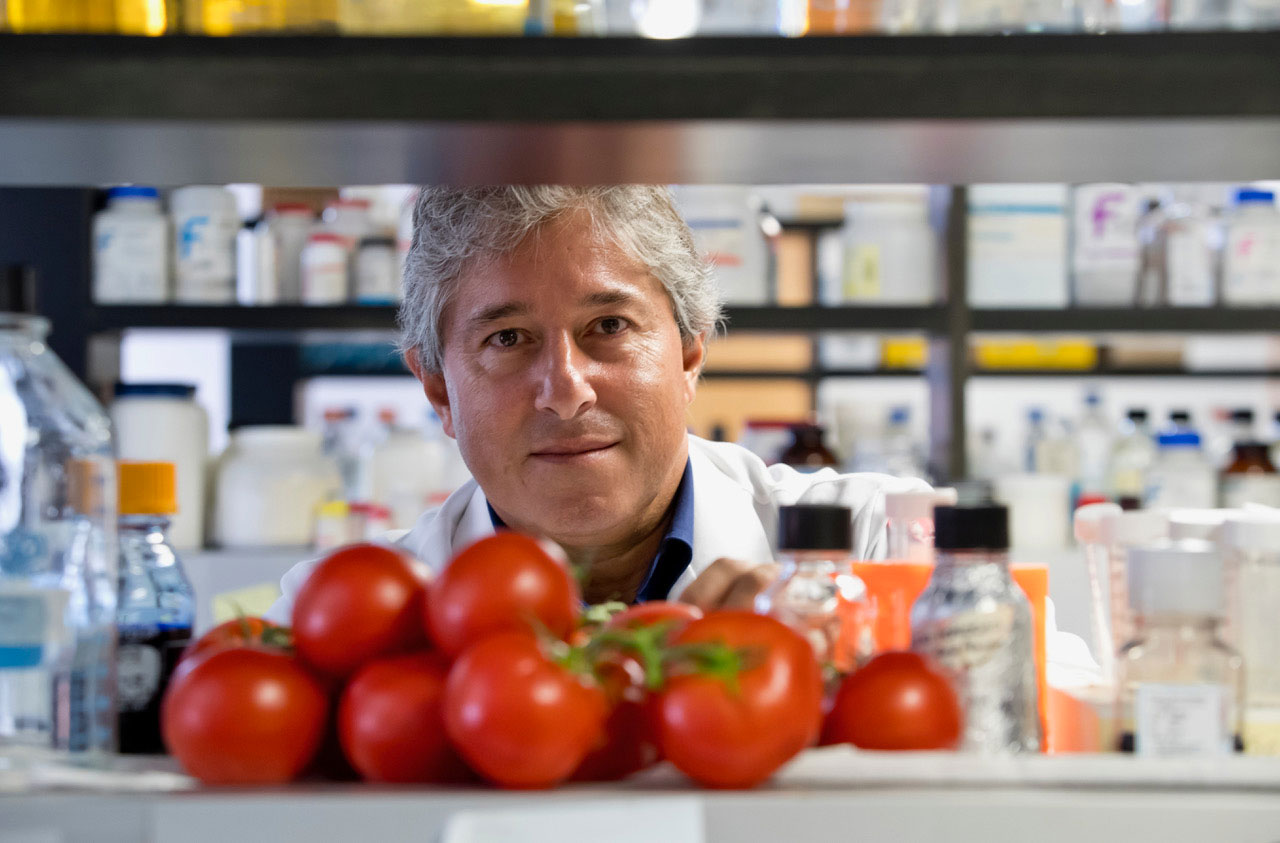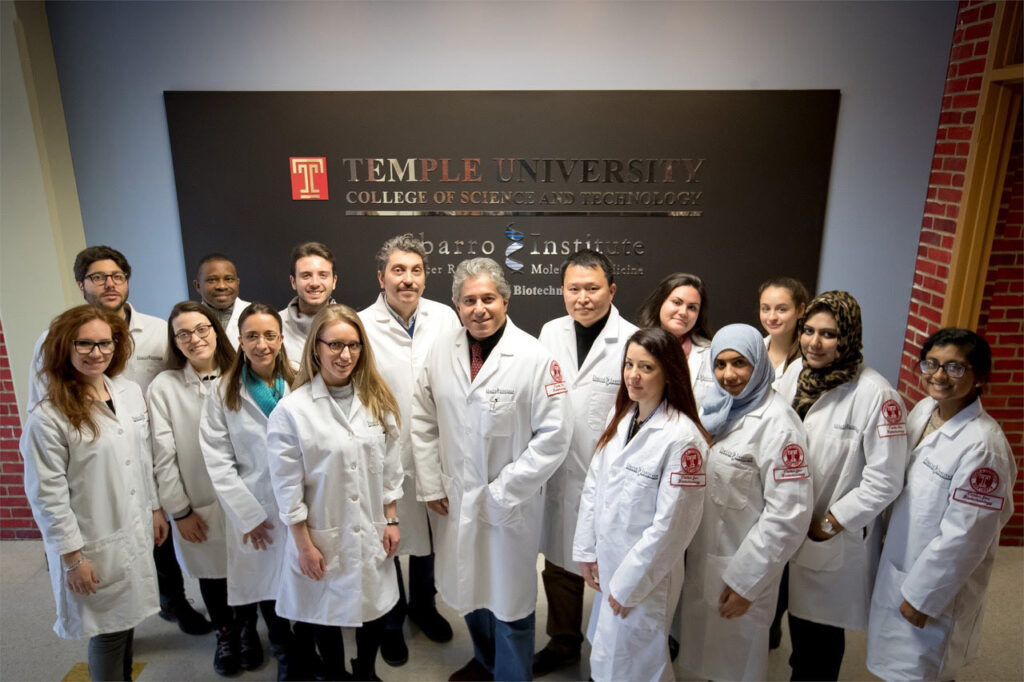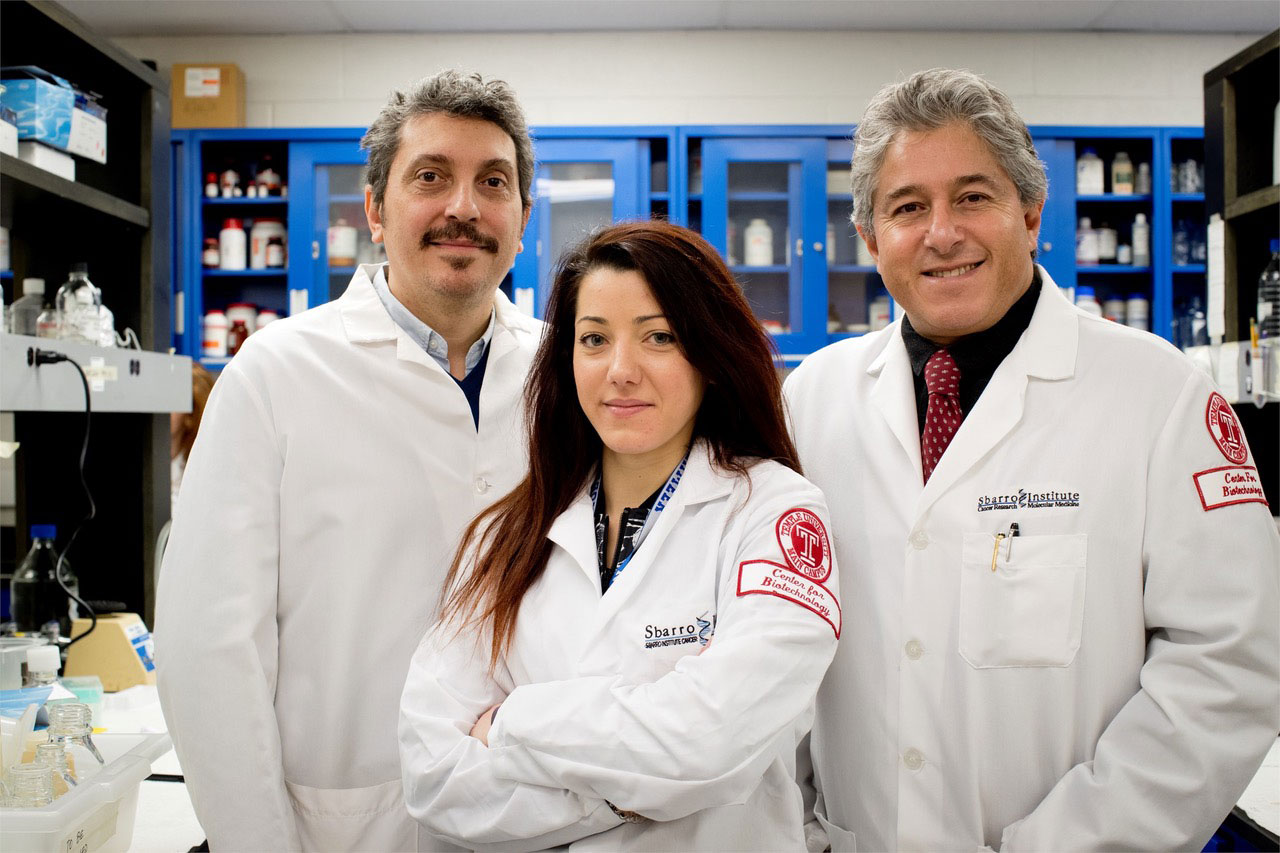Deeper Understanding of Malignant Mesothelioma Reveals New Novel Targets to Investigate Post & News admin August 15, 2021 Originally published in Newswise Progranulin is a growth factor in cellular activity that is known to play a key role in the proliferation of tumors. In the case of malignant mesothelioma, researchers are honing in on how progranulin interacts with signal pathways through a system of proteins and receptors in our cells. A team of investigators from the Sbarro Institute for Cancer Research and Molecular Medicine, and the Center for Biotechnology at Temple University, including Dr. Elisa Ventura, Dr. Antonio Giordano and Dr. Andrea Morrione, in collaboration with Dr. Renato V. Iozzo from the Department of Pathology, Anatomy and Cell Biology at Department of Pathology & Genomic Medicine at TThomas Jefferson University, and Dr. Antonino Belfiore from the University of Catania, Italy, has previously demonstrated that in mesothelioma, progranulin regulates cell migration, invasion, adhesion, and in vivo tumor formation.The same team of investigators has recently published their characterization of the molecular mechanisms of progranulin oncogenic action in mesothelioma as relates to the Epidermal Growth Factor Receptor (EGFR) and RYKs. The study entitled “Progranulin and EGFR modulate RYK (Receptor-like Tyrosine Kinase) sorting and stability in mesothelioma cells,” appears in the international-peer-reviewed journal American Journal of Physiology Cell Physiology.Malignant mesothelioma is a very aggressive cancer with a very poor survival and limited treatment options. Thus, a deeper knowledge of the mechanisms driving mesothelioma initiation and progression is critical for novel therapeutic strategies. In this study, the authors demonstrated that progranulin directly interacts with RYK and functionally modulates its intracellular trafficking in mesothelioma cells, thereby regulating RYK stability and action. They also showed that RYK complexes with the EGFR, which modulates RYK stability in mesothelioma cells, thereby indicating that progranulin-dependent downstream signaling depends on RYK and EGFR internalization and sorting.“The discovery of RYK and EGFR as the functional signaling receptors for progranulin offers a new avenue for understanding progranulin oncogenic action,” says Giordano, President of the Sbarro Health Research Organization (SHRO) at Temple University, “and the identification of novel proteins involved in regulatory mechanisms may constitute novel therapeutic targets in Malignant Mesothelioma.”About the Sbarro Health Research OrganizationThe Sbarro Health Research Organization (SHRO) is non-profit charity committed to funding excellence in basic genetic research to cure and diagnose cancer, cardiovascular diseases, diabetes and other chronic illnesses and to foster the training of young doctors in a spirit of professionalism and humanism. To learn more about the SHRO please visit www.shro.org Previous PostNext Post
Category: Post & News
Researchers Call for More Transparency from Russia’s Sputnik COVID Vaccine
Researchers Call for More Transparency from Russia’s Sputnik COVID Vaccine Post & News admin August 15, 2021 “It is not a problem connected to “the Sputnik V” vaccine itself,” argues Prof. Enrico Bucci, adjunct professor in the Department of Biology, Temple University, and senior staff member of the Sbarro Health Research Organization (SHRO). “It is a problem connected to the way results are documented, data are provided, and scientific journals react to observations coming from the global researchers’ community.” This is why the May 8th issue of the prestigious British Medical Journal featured a cover story revolving about the role of another prestigious journal, The Lancet, in promoting the clinical research purportedly documenting the safety and efficacy of the covid vaccine “Sputnik V”. Bucci is acknowledged as one of the first researchers raising the alarm about inconsistencies, potential problems, and the lack of access to the primary data, pointed out by Chris Van Tulleken, honorary associate professor at the UCL in London.1 In a related opinion piece in the same issue of BMJ, another international researcher, Dr. Vasiliy Vlassov2 also points out the critical role played by prof. Enrico Bucci in uncovering the problems related to the Sputnik V publications, but it is important to note that several international researchers joined forces to publish a first letter3 on The Lancet detailing their concerns on the phase 1/2 trial of the Sputnik vaccine previously published by The Lancet. On May 12th, The Lancet published a second letter,4 where again prof. Bucci and several other internationally renowned experts brought to the community’s attention further concerns, this time on the published phase 3 trial of the Russian vaccine. Together with the BMJ cover story, both the Letters published by The Lancet document in full details both the problems in the published trials and the problem in the revision process, which let pass two articles that were already corrected three times, yet without providing any access to the data needed to verify the claims made by the authors. “The Sbarro Health Research Organization congratulates prof. Bucci for these important achievements in the battle for keeping high standards in published biomedical research,” says prof. Antonio Giordano, M.D., Ph.D., Founder and President of SHRO. “Our scientists are very committed to research integrity, as we believe it is the responsibility of the entire scientific community to improve the overall quality of the published scientific record.” Giordano concludes. Sources: van Tulleken C. Covid-19: Sputnik vaccine rockets, thanks to Lancet boost. BMJ. 2021;373:n1108. doi:10.1136/bmj.n1108 Vlassov V. Sputnik V and Russia’s covid-19 vaccine race – The BMJ. BMJ (Online). https://blogs.bmj.com/bmj/2021/05/06/vasiliy-vlassov-sputnik-v-and-russias-covid-19-vaccine-race/. Published 2021. Accessed May 14, 2021. Bucci E, Andreev K, Björkman A, et al. Safety and efficacy of the Russian COVID-19 vaccine: more information needed. Lancet. 2020;396(10256):e53. doi:10.1016/S0140-6736(20)31960-7 Bucci EM, Berkhof J, Gillibert A, et al. Data discrepancies and substandard reporting of interim data of Sputnik V phase 3 trial. Lancet. 2021;0(0). doi:10.1016/S0140-6736(21)00899-0 About the Sbarro Health Research Organization (SHRO) The Sbarro Health Research Organization is a non-profit charity committed to funding excellence in basic genetic research to cure and diagnose cancer, cardiovascular diseases, diabetes and related chronic illnesses and to foster the training of young doctors in a spirit of professionalism and humanism (www.shro.org) SEE ORIGINAL STUDY Previous PostNext Post
SHRO’s Giordano Meets with Speaker Pelosi at Italian Embassy in Washington
SHRO’s Giordano Meets with Speaker Pelosi at Italian Embassy in Washington Post & News admin August 15, 2021 Newswise — WASHINGTON, D.C. May 19, 2021—At the prestigious setting of Villa Firenze, the Italian Embassy in Washington, DC, on the occasion of a farewell party for outgoing Ambassador Armando Varricchio, Professor Antonio Giordano, Neapolitan oncologist, director of the Sbarro Institute for Cancer Research at Temple University, member of the board of directors of the National Italian American Foundation (NIAF), and frequent collaborator with the University of Siena, Italy, was in attendance among the many high-ranking government officials and honored guests. Giordano had the opportunity to meet with Congresswoman Nancy Pelosi (D-CA), speaker of the House of Representatives from 2007 to 2011 and again from 2019 to today, the first Italian American woman to hold this office. Various topics were discussed: from the pandemic to the environment, from health to the importance of scientific research. The meeting was attended by some members of the NIAF: the president Robert Allegrini, the chairman of the board Robert Carlucci, the lawyer Joseph Del Raso and other figures from the United States government. Pelosi and Giordano discussed the importance of biomedical research and in particular, efforts to discover more effective treatment and potentially a cure for cancer, as well as her support for the work of the NIAF. About the Sbarro Health Research Organization (SHRO) The Sbarro Health Research Organization is a non-profit charity committed to funding excellence in basic genetic research to cure and diagnose cancer, cardiovascular diseases, diabetes and related chronic illnesses and to foster the training of young doctors in a spirit of professionalism and humanism (www.shro.org) Previous PostNext Post
Inflammation and Procalcitonin Predict Success, or Not, of Lung Cancer Treatment
Inflammation and Procalcitonin Predict Success, or Not, of Lung Cancer Treatment Post & News admin August 15, 2021 In patients with non-small cell Lung Cancer (NSCLC), the presence of either high chronic inflammation, or procalcitonin levels in the blood as a response to bacterial infection, both predict a poor response to treatment with immune checkpoint blockade. The novel treatment studied includes peripheral-immune-checkpoint blockade (P-ICB) with mAbs to PD-1 (nivolumab and pembrolizumab), or PD-L1 (atezolizumab, durvalumab, avelumab) alone, or in combination with chemotherapy. Due to the potential for immune-related adverse events and high cost, In this context it appears of critical interest to find reliable biomarkers of response in order to accurately identify good candidates for this treatment, or to identify other interventions necessary to maximize their efficacy. Findings have been accepted for publication in the journal Frontiers in Oncology, in the study entitled: “Inflammatory markers and procalcitonin predict the outcome of metastatic non-small-cell-lung-cancer patients receiving PD-1/PD-L1 immune[1]checkpoint blockade,” by Valerio Nardone, Rocco Giannicola, Giovanna Bianco, Diana Giannarelli, Paolo Tini, Pierpaolo Pastina, Antonia C. Falzea, Sebastiano Macheda, Michele Caraglia, Amalia Luce, Silvia Zappavigna, Luciano Mutti, Luigi Pirtoli, Antonio Giordano, and Pierpaolo Correale. The authors include lead researchers with the Sbarro Institute at Temple University, and collaborators at the University of Siena, the University Vanvitelli of Naples and the Grand Metropolitan Hospital-Bianco Melacrino Morello in Reggio Calabria, Italy, who carried out a multi-institutional retrospective study on metastatic NSCLC patients receiving immunological treatment with monoclonal antibodies targeting the PD-1 immune-checkpoint pathway. These patients often present serious comorbidities including broncho-pneumopathies and recidivating subclinical bacterial infection in the proximal and low respiratory tract related to smoking and to the impairment of the respiratory physiopathology. “This study continues the promising collaboration among the Sbarro Institute and our affiliated researchers employed in prestgious italian institutes,” says Antonio Giordano, M.D., Ph.D., Director of the Sbarro Institute, Temple University, and the Sbarro Health Research Organization (SHRO). “Continuing intuitive clinical observations, validated by more sophisticated technology, may lead to great therapeutic improvement for NSCLC patients worldwide.” It was shown that chronic inflammation and systemic bacterial infection appear to be independent variables of poor prognosis which becomes dramatically more poor when they are both present. This study has therefore identified possible biomarkers for the treatment to be investigated in further prospective trials, which may open an interesting scenario such as the need for systemic treatment with anti-inflammatory drugs and microbiota interfering strategies prior to treating NSCLC in these patients. About the Sbarro Health Research Organization (SHRO) The Sbarro Health Research Organization is a non-profit charity committed to funding excellence in basic genetic research to cure and diagnose cancer, cardiovascular diseases, diabetes and related chronic illnesses and to foster the training of young doctors in a spirit of professionalism and humanism (www.shro.org) Original Newswise Release Previous PostNext Post
The Medicine in Eye Drops Needs a Disguise to Sneak Past Your Tears
The Medicine in Eye Drops Needs a Disguise to Sneak Past Your Tears Post & News admin August 15, 2021 Scientists use engineered protein coating that binds to receptors on the surface of corneal cells to improve drug uptake. The most practical solution for drug delivery to the eyeball is topical, i.e. eye drops. However, a naturally occurring substance in tears actually can interact with the drug delivery system (DDS), hindering absorption of the drug and preventing it from getting into the cells it needs to target. Mucin, or MUC, is usually there to protect your eye, but when MUC is exposed to a molecule such as a lipoplex, a common form of DDS already used in ophthalmological drugs, it will bind to it and reduce absorption into the targeted tissue. So, scientists asked, is there some way to sneak the lipoplex past the MUC? Through the use of an engineered, artificial protein corona (PC), researchers were able to dress the lipoplexes up as something that MUC would ignore. They found that a protein called Fibronectin (FBN), and a tripeptide of the amino acids Valine, Glycine, and Aspartate (VGA), were both effective at concealing the lipoplex, avoiding being coated in MUC, and binding to the corneal epithelial cells for better absorption of the DDS. “Because MUC binds to the lipoplex surface, it alters both their size and the positive or negative surface charge,” explains Carlo Astarita, Ph.D. candidate studying at the Sbarro Institute for Cancer Research and Molecular Medicine, Department of Biology, College of Science and Technology, Temple University. “This reduces absorption of the medicine by the primary corneal epithelial cells. So, how do we prevent MUC from interfering? We give the liposome a new coating that is recognized by receptors expressed on the ocular surface, circumventing the problem, and delivering the molecule more directly to the targeted tissue.” The researchers are part of a multi-institutional, international collaboration between the Sbarro Institute for Cancer Research and Molecular Medicine at Temple University, the University of Pennsylvania’s Scheie Eye Institute, and co-authors at several universities in Italy. “As a dry eye specialist I see a myriad of patients with various surface disease issues,” says Giacomina Massaro, M.D., of the Scheie Eye Institute, Department of Ophthalmology in the Perelman School of Medicine at the University of Pennsylvania, “and in order to achieve an effective treatment, drugs need to reach the target tissue (i.e. the corneal epithelial cells). In many situations the drugs are blocked by a complex mix of mucous, lipids, proteins and fluids which bathe the ocular surface. It is imperative that drugs have the ability to break through this barrier.” “This study is a quintessential example of our researchers using precision medicine to innovate,” says Antonio Giordano, M.D., Ph.D., Founder and Director of the Sbarro Health Research Organization (SHRO) and the Sbarro Institute at Temple University, as well as a joint research program with the University of Siena, Italy. “We identify a problem which inhibits the efficacy of certain types of treatments, and then we ask, ‘what does the body provide in this case as its own solution?’ In this case, the answer is right there on the surface of the cells: we make the medicine so that it binds with the targeted tissue. In this way, precision medicine opens the door to increased effectiveness to treat a wide range of ocular conditions and disease.” About the Sbarro Health Research Organization (SHRO) The Sbarro Health Research Organization is a non-profit charity committed to funding excellence in basic genetic research to cure and diagnose cancer, cardiovascular diseases, diabetes and related chronic illnesses and to foster the training of young doctors in a spirit of professionalism and humanism (www.shro.org) visit Dr. Antonio Giordano Original Newswise release Next Post





